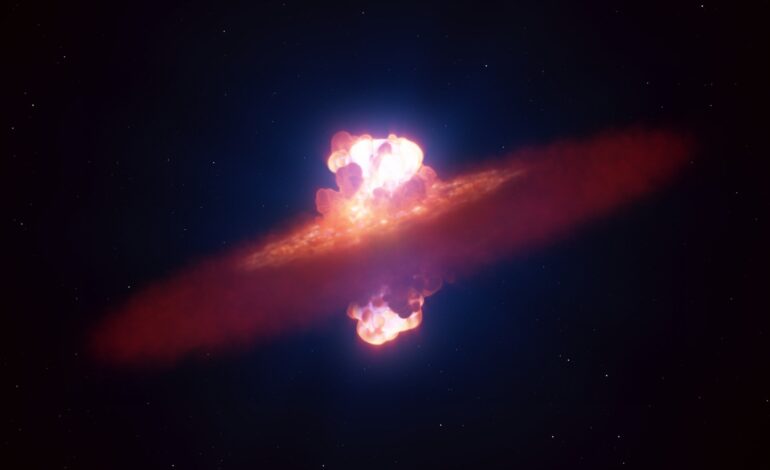Astronomers Capture Unique Shape of Exploding Star for First Time

Astronomers have achieved a groundbreaking milestone by detecting the early shape of a star explosion, known as a supernova, for the first time. This observation, made possible by a team using the European Southern Observatory’s (ESO) Very Large Telescope (VLT), provides new insights into the death of massive stars and the processes that drive these cataclysmic events.
The supernova, designated as SN 2024ggi, is located in the galaxy NGC 3621, approximately 22 million light-years away in the constellation Hydra. The research team, led by Yi Yang, an assistant professor at Tsinghua University in Beijing, utilized a technique called “spectropolarimetry” to gather data on the explosion’s geometry—information that was previously unattainable. Their findings were published in the journal Science Advances.
Understanding Supernova Explosions
Typically, stars maintain their spherical structure due to a balance between gravitational pressure and the internal pressure generated by nuclear fusion in their cores. When stars exhaust their nuclear fuel, they undergo gravitational collapse, leading to an explosion that ejects their outer layers. This creates a supernova, which enriches the interstellar medium with elements formed in the star.
In the case of SN 2024ggi, the team made their observations shortly after the explosion occurred. The supernova was first detected on the evening of April 10, 2024, and the VLT captured its details the following day. The swift response from Yang and his colleagues allowed them to analyze the initial “breakout” shape of the explosion before the shock wave interacted with its surrounding environment.
By employing spectropolarimetry, which measures the polarization of light across various wavelengths, the researchers could glean information about the explosion’s characteristics. Although supernovae typically appear as single points in telescope images, the polarization of light reveals critical details about the explosion’s structure. Most stars exhibit a net polarization of zero, indicating a spherical shape; however, a non-zero net polarization suggests a more complex geometry.
Revealing Insights into Stellar Evolution
The VLT’s FOcal Reducer and low dispersion Spectrograph 2 (FORS2), recently installed on the telescope, was essential for this analysis. It enabled the researchers to measure the polarization of light emitted from SN 2024ggi. The findings indicated that the initial blast had an olive shape, which flattened as the explosion expanded outward, while the axis of symmetry of the ejected material remained consistent throughout.
As Dietrich Baade, an astronomer at ESO and a co-author of the study, explained, “The first VLT observations captured the phase during which matter accelerated by the explosion near the centre of the star shot through the star’s surface. For a few hours, the geometry of the star and its explosion could be, and were, observed together.”
This research not only enhances the understanding of supernova mechanisms but also exemplifies the effectiveness of international scientific collaboration. The observations from SN 2024ggi allow astronomers to refine existing supernova models and rule out others, addressing fundamental questions in stellar evolution that have long been debated.
As the field of astronomy continues to advance, the implications of this discovery could reshape theories surrounding the life cycles of massive stars and their ultimate fate in the cosmos.






